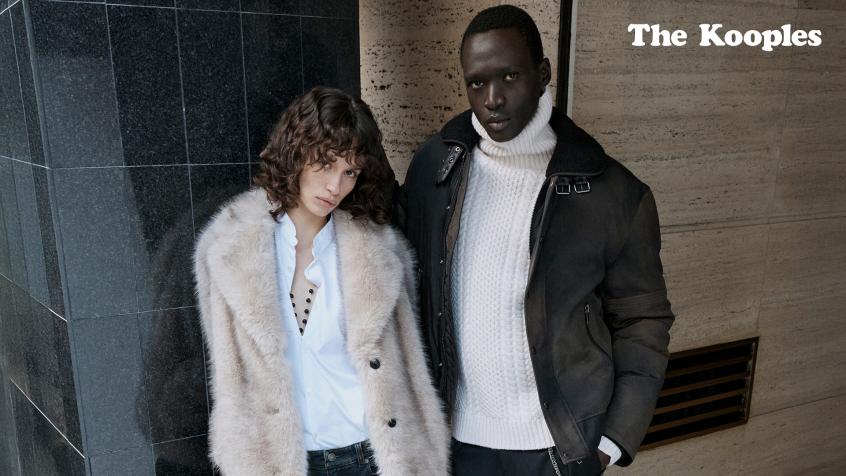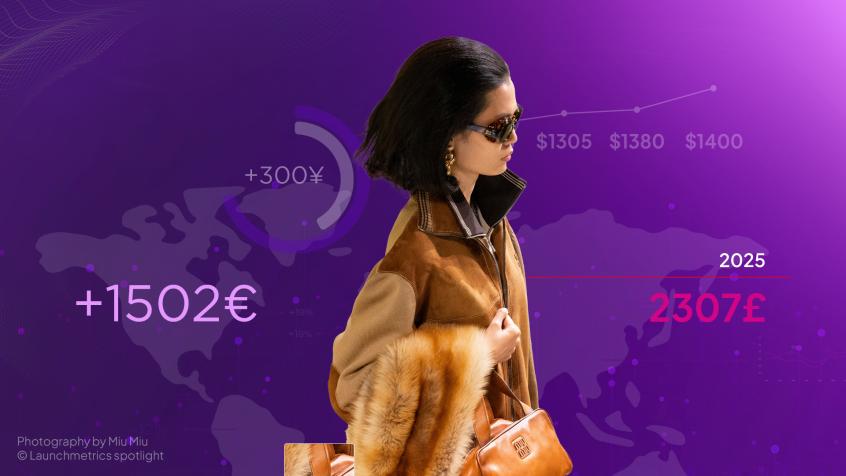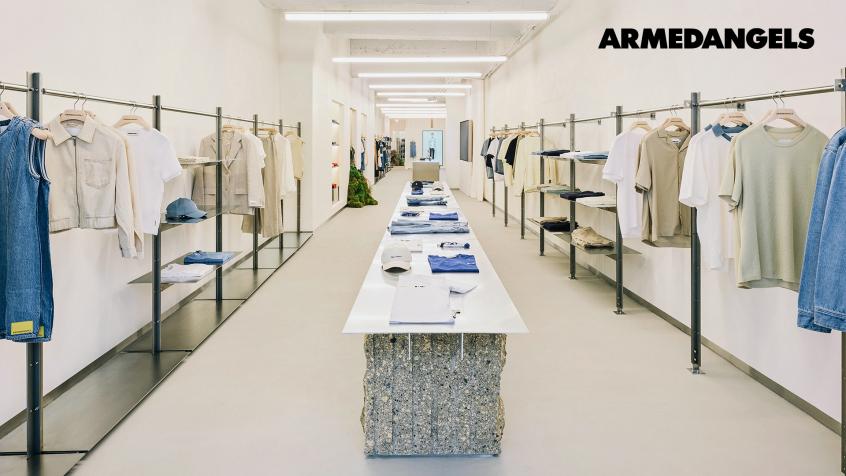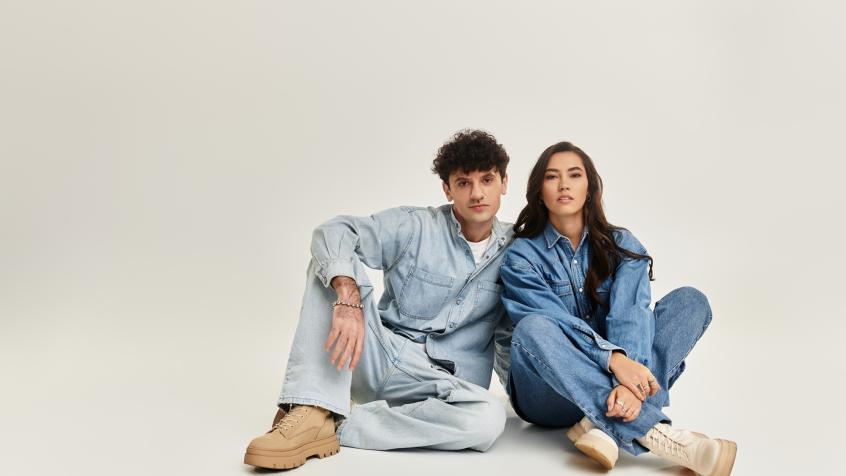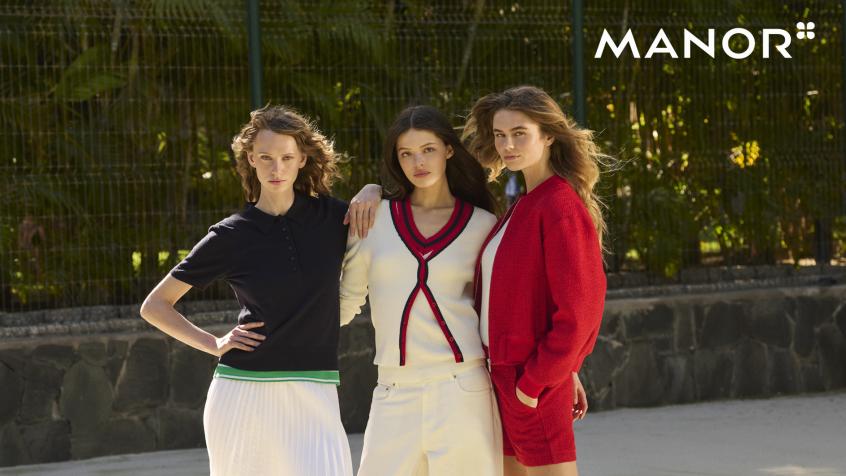Burberry : elevating british luxury
Standing between high end and accessible luxury.

Key takeaways
- A large portion of Burberry’s assortment share lies in accessories, leather goods and outerwear, simultaneously sticking to the brand’s core DNA and elevating its overall offer.
- Burberry’s leather goods pricing strategy sits on the lower end of the high-end luxury spectrum but is still higher than accessible luxury brands’ pricing.
- On an international level, Burberry’s prices are the highest within the Chinese market.
The epitome of British luxury, Burberry, was one of the hottest luxury brands in the fashion industry throughout 2021. The Luxury brand, present within the fashion industry for 156 years, has showcased several changes of power in the past several years, in ambitions towards bringing the brand higher up-market. The most recent change in power, being the addition of Jonathan Akeroyd as CEO, starting in April 2022 - Akeroyd who is already familiar with elevating a brand, having done so previously as Versace’s CEO.
Burberry has already made progress in elevating its brand with former CEO Marco Gobbetti, and has even eliminated in-store discounts, falling closer in line with leading luxury brands. However, where does the brand currently stand in comparison to high-end competitors and accessible luxury brands? Are the brand’s assortment and pricing visibly moving higher up-market?
Want to access competitor data and optimize your own brand’s assortment, discount, and pricing strategies? Find out how Retviews, the automated benchmarking solution for fashion brands can help you stay on top of competitor strategies and enhance your own performance with real-time data.
Outerwear leader
Within high-end luxury brands’ collections, leather goods generally constitute one of the largest portions of their overall assortment. Burberry, standing in the middle, between high-end and accessible luxury brands, making progress in moving towards the high-end side, has elevated its leather goods assortment, despite the fact that its brand DNA and heritage lie in outerwear. So, what exactly does the British luxury leader’s assortment look like?

Looking at the UK market, Retviews data indicates that, having elevated its leather goods assortment, Burberry stands close to its high-end luxury counterparts, with a similar, albeit smaller, assortment of leather goods, representing approximately 20% of its overall assortment. Accessories also make up a significant 39% share of the British brand’s total assortment, more prominent than that of luxury leaders Gucci, Louis Vuitton, and Prada. The increased share of accessories is primarily attributed to the brand’s large scarf collection.

Where Burberry also shines is the outerwear category, having a larger assortment than luxury competitors, thanks to the famous Burberry trench coat that has remained the brand’s signature piece and makes up over 30% of its outerwear collection, along with the iconic Burberry check print. Another prominent outerwear segment is the puffer jacket, aligned with the gorpcore trend, and one of the hottest outerwear pieces throughout the past several seasons, making up a strong 23,8% of Burberry’s outerwear assortment.
Burberry’s “core focus products”, leather goods and outerwear have shown significant sales growth recently, indicating that Burberry is moving towards the right direction within its assortment, elevating its leather goods’ assortment and prioritizing its outerwear heritage, simultaneously. However, should the brand step back from the accessories category, a segment that is currently making up the largest portion of its assortment, but is overshadowed by leather goods and outerwear in terms of sales growth?
High end or accessible pricing?
Pricing strategies are a leading differentiator, setting high end and accessible luxury apart. With regards to Burberry and how it compares to high-end and accessible luxury brands, where does the brand actually stand? Is it far off from its counterparts, or does its current pricing strategy sit closer on one side of the market?

Diving into Retviews’ real-time data and looking into leading brands’ pricing strategies for leather goods (including bags and small leather goods) within the UK market, showcases that Burberry’s leather goods pricing currently sits close to high-end luxury brands, although still on the lower end of the pricing spectrum, as both its maximum and most frequent prices are significantly lower than that of leading luxury brands Gucci, Louis Vuitton and Prada. The luxury brands however stand at a similar entry-level price.
When comparing Burberry to accessible luxury brand Michael Kors the brands differ strongly in terms of all leading price points - minimum, maximum, and most frequent price, setting Burberry’s pricing strategy well above the accessible luxury level.
Burberry's international pricing strategy
Considering Burberry’s international reach, and recent results indicating significant growth within the Asia Pacific; namely Chinese and Korean; markets, as well as the American market, with a decrease in sales within the European market, begs the question of what pricing looks like for the brand, in different regions? How much more or less expensive is Burberry on an international level?

Competitive benchmarking solution Retviews’ real-time data, dives into the leading luxury brand’s international average price points and indicates that, when indexing Burberry’s prices on the brand’s UK market average price, the United States, Korean, Japanese, and Chinese markets are all higher than in the UK, with Burberry China standing at an average price point 24% higher than in the UK. The Asia Pacific region also showcased a strong 16% revenue growth throughout the 2020-2021 period, where other regions such as the Americas, Europe, the Middle East, and Africa faltered.
Could the British brand further elevate its offer with an increase in prices, taking into account the higher price within the Chinese and Korean market, and the same regions also reporting full-price retail growth of 37% and 66%, respectively, in the last quarter, in comparison to the same time period in 2020.
Towards high end luxury
Burberry has made strong progress in elevating its brand’s offer and upgrading its retail strategy, as the brand has boosted its leather goods assortment successfully and shown strong growth in the category, as well as its heritage category of outerwear. Nevertheless, the brand still has not reached the high-end price point of its competitors. Can the brand bring its pricing strategy higher up-market, to match leather goods specialists? Brands like Bottega Veneta have been able to successfully reinvent themselves, whilst sticking to their brand DNA. As Jonathan Akeroyd is soon to stand at the helm of Burberry and further elevate the brand, will it stick to its heritage, or will we be seeing a new face of Burberry?
Leading fashion brands are able to monitor competitor strategies and see how they differ from other brands in order to optimize their assortment, pricing and discount strategies and thus maximize margins, with the automated benchmarking solution Retviews, whose real-time data allows brands to stay on top of the industry.
Find out how Retviews can help optimize your brand’s strategy and save time with automated benchmarking.
Retviews
Related content
